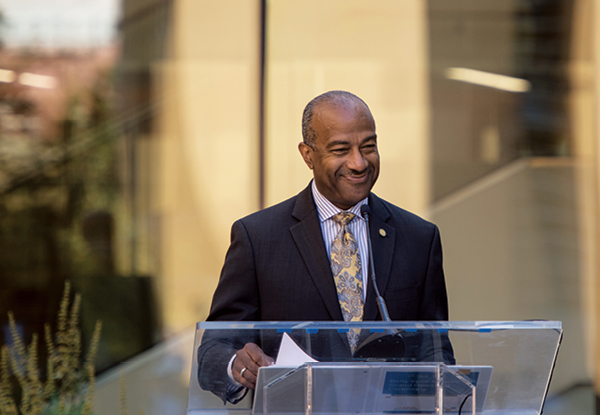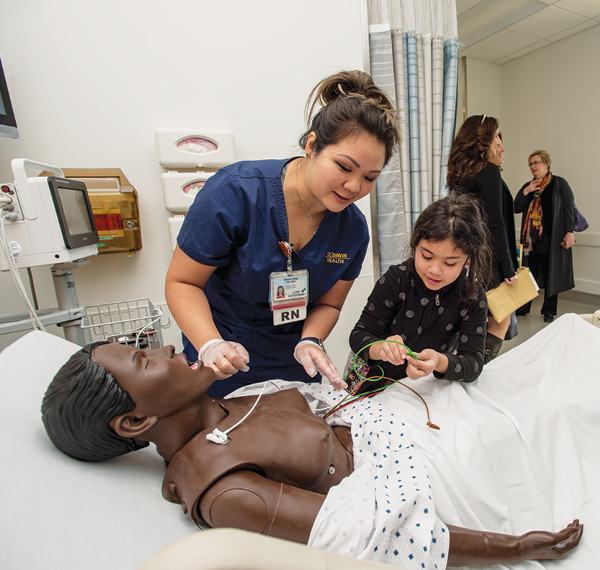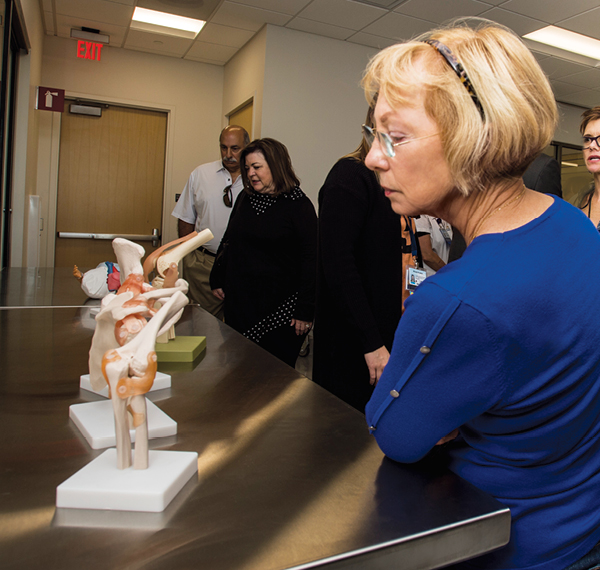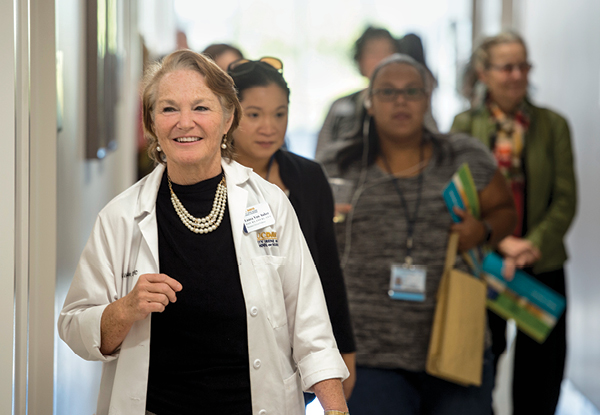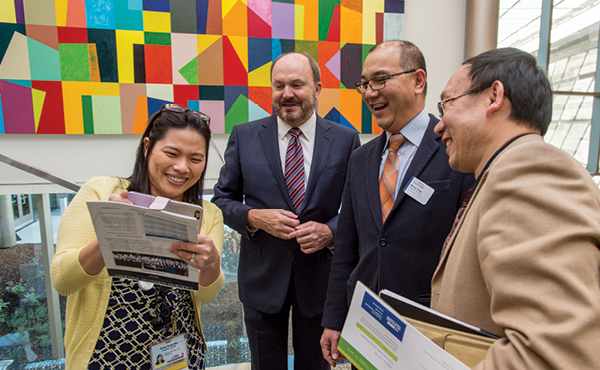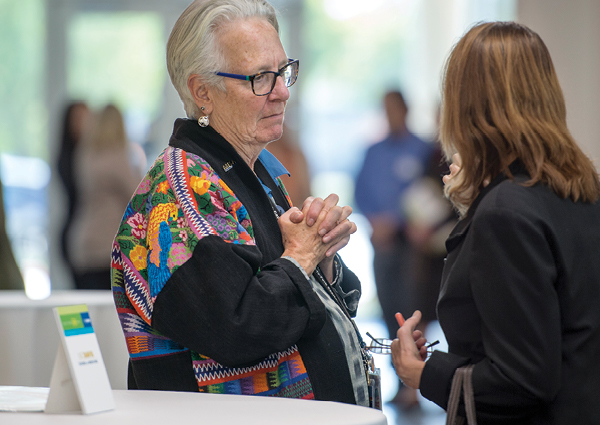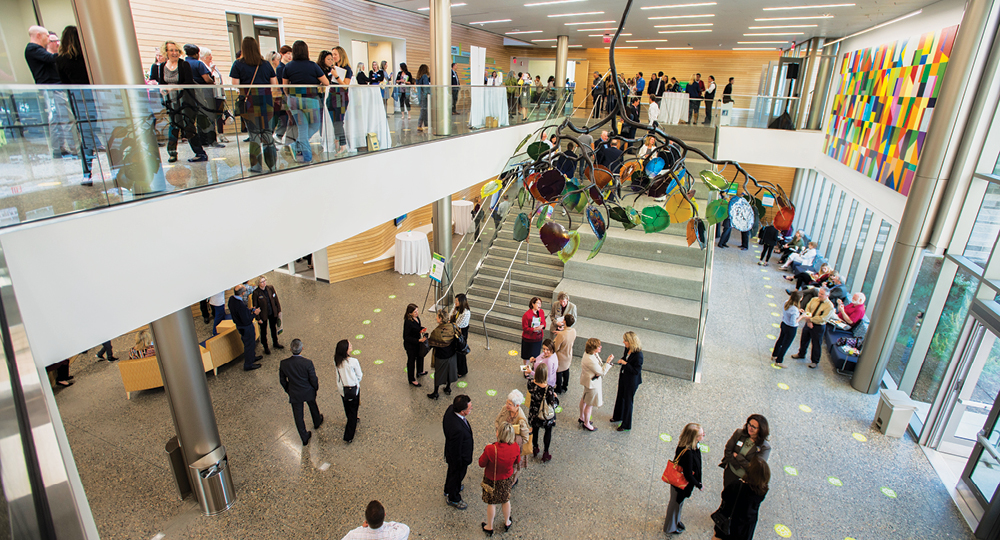
Bright futures launch here
School of Nursing opens new home
The high-tech Betty Irene Moore Hall is the new home for UC Davis’ nationally ranked nursing school—and a living symbol of innovative, interprofessional health education across UC Davis Health.
When leaders, faculty, staff and students of the Betty Irene Moore School of Nursing at UC Davis packed up and moved into their new home on UC Davis Health’s campus in Sacramento last fall, it signaled more than a simple change of address.
The transition to Betty Irene Moore Hall also marked a significant milestone in the life of the fast-growing school —and a physical manifestation of the innovative redesign of education constantly underway at the School of Nursing and across the university’s academic health system. Founding Dean Heather M. Young and other leaders from UC Davis Health, UC Davis and the Gordon and Betty Moore Foundation hosted the ribbon-cutting and open house for the facility, which serves as the nursing school’s new home and as a center of interprofessional health sciences education for students in nursing, medicine, public health, informatics and other fields.
The 70,000-square-foot structure features a variety of innovative learning environments designed to engage students, actively involve faculty members and create spaces for collaboration across health disciplines. Features such as writeable walls in small areas and propeller-shaped tables in larger learning studios encourage teamwork and active instruction. Commons areas provide capacity for community events and guest lectures.
A new way to engage students
The layout of Betty Irene Moore Hall promotes a different type of conversation, in which innovative teaching and technology foster greater communication. In particular, the emphasis on interactive learning is designed to enable students to quickly call to mind information during stressful circumstances later.
“Actively engaged students are more likely to recall what they learned later within a variety of situations and contexts, increasing their ability to improve care,” says Terri Harvath, the School of Nursing’s executive associate dean.
Gone are the traditional lobby and long, door-lined hallways separating classrooms. Instead, three classrooms — 175-, 125- and 60-seat rooms — emphasize group learning and creative use of multimedia tools, through clusters of propeller-shaped tables equipped with their own audio- visual systems. The layout of these classrooms empowers professors to move around the room and engage with students, as opposed to orating from a lectern. This design also provides students more ability to engage with the instructor and each other, thus boosting confidence.
“Rather than being packed shoulder to shoulder in a lecture hall, this open environment sets everyone at ease,” says Justin Palmer, a Class of 2018 physician assistant alumnus. “It facilitates ease of discussion during class.”
Students also benefit from simulation- based environments that allow them to experience clinical-care situations in real time, without risking safety. The facility features integrated labs in which individual care scenarios play out on one side and, on the other, debriefing rooms provide a setting to discuss bedside decisions and reflect on choices made.
“We want our students to watch care practiced, administer care themselves and then be able to teach another team member how to care for a person seeking treatment,” says Elizabeth Rice, associate dean for clinical education and practice. “This philosophy is ideal for students to retain their knowledge at a very advanced level.”
The simulation suites provide opportunities for hands-on practice within a wide variety of clinical settings, such as an eight-bed inpatient hospital ward, a 15-room primary care clinic and task and anatomy skill labs. A particularly unique simulation experience — a fully furnished and operational one-bedroom apartment —enables students to practice caring for people in their homes.
“We expect our health care students to become leaders in the profession — innovating, working directly with their patients, working with each other and really moving their professions forward in a space where health care is performed as much at home as it is in the hospital,” UC Davis Chancellor Gary S. May told the crowd at the grand opening event in October 2017.
“The most important thing about Betty Irene Moore Hall is how it will be used,” adds Ken Moore, trustee of the Gordon and Betty Moore Foundation. “Our goal is to create change agents…highly qualified health professionals who will go out and improve health systems, not just maintain the status quo. This building, and what goes on inside it, is a huge step forward in fulfilling that vision.”



